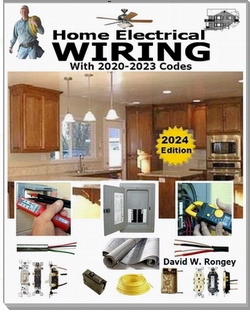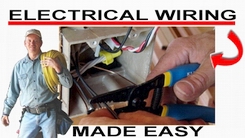Detailed Instructions for the Electrical Load Calculator.
Introduction to the Electrical Load calculator
The purpose of the residential electrical load calculation is to accurately determine the size of the electrical service base upon the electrical equipment that will be installed. The national electrical codes are the basis of making sure the electrical service is sized properly and installed correctly.
Step 1
The General Electrical Load Requirements are based on the inside square feet area of the home which is then used to calculate the basic lighting load and required appliance circuits.
The Residential Electrical Load Calculator is Pre-Loaded with electrical information for you to chose from. Click on the Question Mark Buttons for more specific information relating to each section and entry.
Step 2
Appliances and Motor Type Loads are typically larger equipment used in the kitchen, laundry room, garage. Be sure to check the nameplate information for accurate calculations.
Step 3
Heating and Air Conditioning. Properly Identifying Heating and Air Conditioning Equipment is very important because the equipment typically requires a larger electrical load.
Step 4
Perform the Calculations: The Calculate button will perform calculations from the information you have provided in this form. The Calculate Button Must Be Pressed when any changes are made to the form.
The Basics of How Electrical Power is Measured and Calculated
What is VA?
VA is the abbreviation for volt-ampere, which is a unit of power that is determined by multiplying the voltage and the amperage current in a circuit. VA is a standard measurement of electrical power that is used for identifying electrical circuit component requirements.
Example: a 120 volt circuit which is providing 1 ampere = 120 volt-amperes.
The Difference Between VA and Watts?
A watt is a measure of true power which is required to perform work at the rate of 1 joule per second. The wattage is calculated by multiplying voltage times the power factor of the circuit.
Example: Watts = Voltage times the Amperage times the Power Factor.
What is Power Factor?
PF or Power Factor is the ratio of the actual power in watts to the apparent power in volt-amperes which is expressed as a percentage.
Example: 100% power factor is the best , however a typical power factor could range between 75 to 90%.
SPECIAL NOTE:
In some areas of the form below you can combine VA loads for multiple equipment with the specified section.
|




















